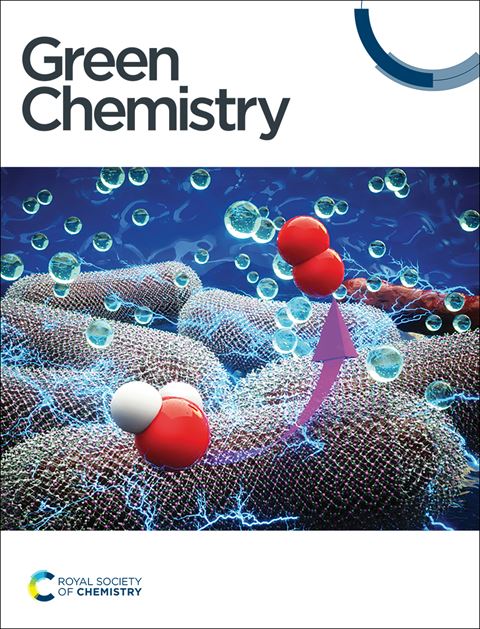Efficient and switchable production of bio-diol/triol chemicals from 5-hydroxymethylfurfural†
IF 9.3
1区 化学
Q1 CHEMISTRY, MULTIDISCIPLINARY
引用次数: 0
Abstract
5-Hydroxymethylfurfural (HMF), regarded as one of the top bio-based platform chemicals, possesses a molecular structure with CO, C–OH, and a furan ring, allowing for its conversion into a variety of high value-added green chemicals through a range of catalytic reactions. This study focuses on the highly promising yet challenging conversion of HMF into furanic and non-furanic chemicals with tunable selectivity via hydrogenation/hydrogenolysis over cobalt–copper–aluminum layered double oxide (CoxCuAl LDO) catalysts. The synthesized CoxCuAl catalysts were meticulously characterized and then utilized for the efficient transformation of HMF into 2,5-bis(hydroxymethyl)furan (BHMF) and 1,2,6-hexanetriol (1,2,6-HTO). The CoAl, CuAl, and physically mixed CoAl + CuAl catalysts predominantly favored BHMF production via hydrogenation of HMF's carbonyl group. However, the optimal Co5CuAl catalyst achieved efficient and switchable production of BHMF (∼91% yield) or 1,2,6-HTO (∼72% yield) under tunable reaction conditions, owing to the synergistic effects of CoCu in modifying electronic–geometric properties, where the electron-enriched Co facilitated ring-opening hydrogenolysis. Indeed, the formed CoCu interface/alloy is capable of both hydrogenation and ring-opening hydrogenolysis, enabling adjustable product formation; however, the absence of this active site in monometallic catalysts hinders ring-opening hydrogenolysis, resulting in the production of a non-switchable product, BHMF. Density functional theory (DFT) calculations and experimental studies disclosed that the bimetallic catalyst outperformed its monometallic counterpart in terms of HMF and H adsorption, which can be attributed to the formation of the CoCu alloy, inducing a modified d-band center. The findings and future development of this work would lead to sustainable production of high value-added bio-diols/triols from bioresources.

求助全文
约1分钟内获得全文
求助全文
来源期刊

Green Chemistry
化学-化学综合
CiteScore
16.10
自引率
7.10%
发文量
677
审稿时长
1.4 months
期刊介绍:
Green Chemistry is a journal that provides a unique forum for the publication of innovative research on the development of alternative green and sustainable technologies. The scope of Green Chemistry is based on the definition proposed by Anastas and Warner (Green Chemistry: Theory and Practice, P T Anastas and J C Warner, Oxford University Press, Oxford, 1998), which defines green chemistry as the utilisation of a set of principles that reduces or eliminates the use or generation of hazardous substances in the design, manufacture and application of chemical products. Green Chemistry aims to reduce the environmental impact of the chemical enterprise by developing a technology base that is inherently non-toxic to living things and the environment. The journal welcomes submissions on all aspects of research relating to this endeavor and publishes original and significant cutting-edge research that is likely to be of wide general appeal. For a work to be published, it must present a significant advance in green chemistry, including a comparison with existing methods and a demonstration of advantages over those methods.
 求助内容:
求助内容: 应助结果提醒方式:
应助结果提醒方式:


